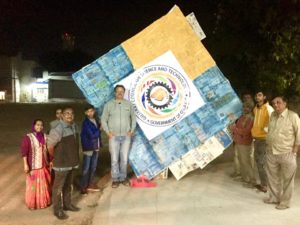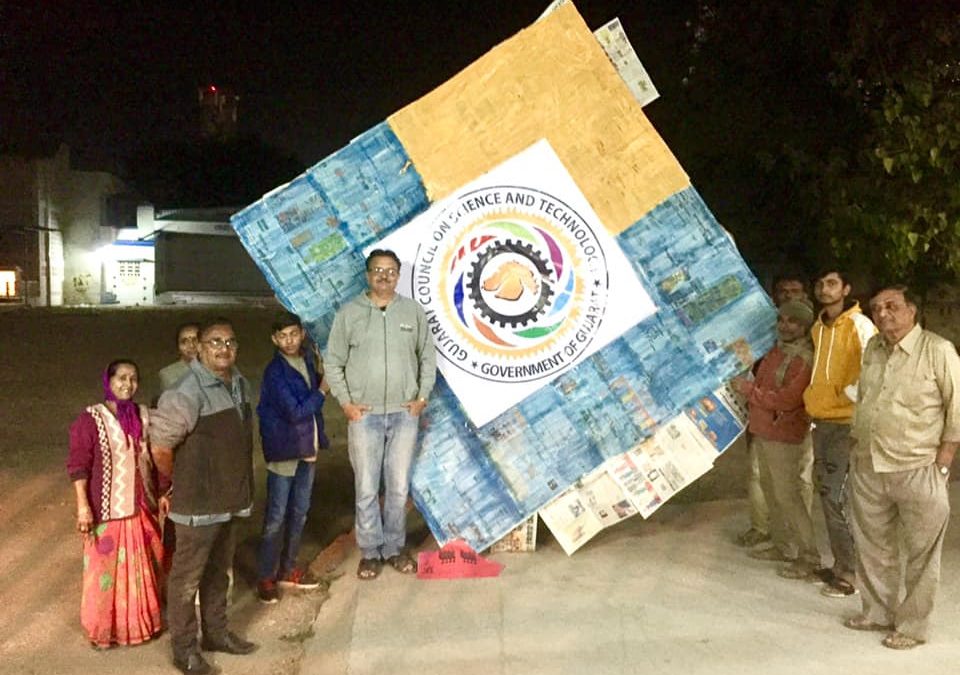


“We are celebrating the KITE EVE with Child scientists namely Himanshu Talaviya, Khelan, Safi & Saif of District Community Science Centre, Children’s Museum & Bal-Bhavan, Amreli(GUJ-INDIA #KiteFlying #HappyUttarayan
A children are making 8ft x 8ft glorious KITE namely Himanshu Talaviya, Khelan, Safi & Sef under the keen guidelines of Dy.Director Shri Dineshbhai Teivedi. Kind presence of Shri T.G.Mandaliya Sir, Shri Pankajbhai Joshi,Shri Chetanbhai Pathak & Shri Pankajbhai Lashkari.
The sun is the most glorious and the most important to life and the festival of Uttarayan is one of the most important and happy feasts in its honor.
Happy kite flying day, pongal & uttarayan.
The festival also features prominently in the state tourism calendar and since 1989 the city of Ahmedabad has been hosting International Kite Festival. With millions celebrating the festival and feeling very strongly about it, people are often indifferent to bird safety messages.
However, some precautions can make kite-flying safer, Pathak says. “Fly kites in open grounds, carefully dispose strings entangled in trees in your neighbourhood and use uncoated cotton threads.”
Many birds get injured or killed as thousands take to the terraces to fly kites to celebrate Makar Sankranti on 14 January, marking the arrival of spring
In Gujarat, the festival is strongly embedded in local culture and cuts across religious differences in arguably one of the most polarised states of India. Families usually spend their entire day on the terraces and rooftops. Kite flyers feel passionately about Uttarayan and eagerly await for 14 January. On the day, many keep a leader board to keep a tally of their score and fly kites late into the night.
The injuries are caused by ‘manja’, the string used to fly kites. Gummed and coated with powdered glass, the strings are made dangerously sharp to slash the thread of an opponent’s kite mid-air during kite fights.
Birds fly into these strings or are entangled in them, causing deep cuts to their wings, nerve injuries, fractures, dislocations and, in many cases, death.


Recent Comments